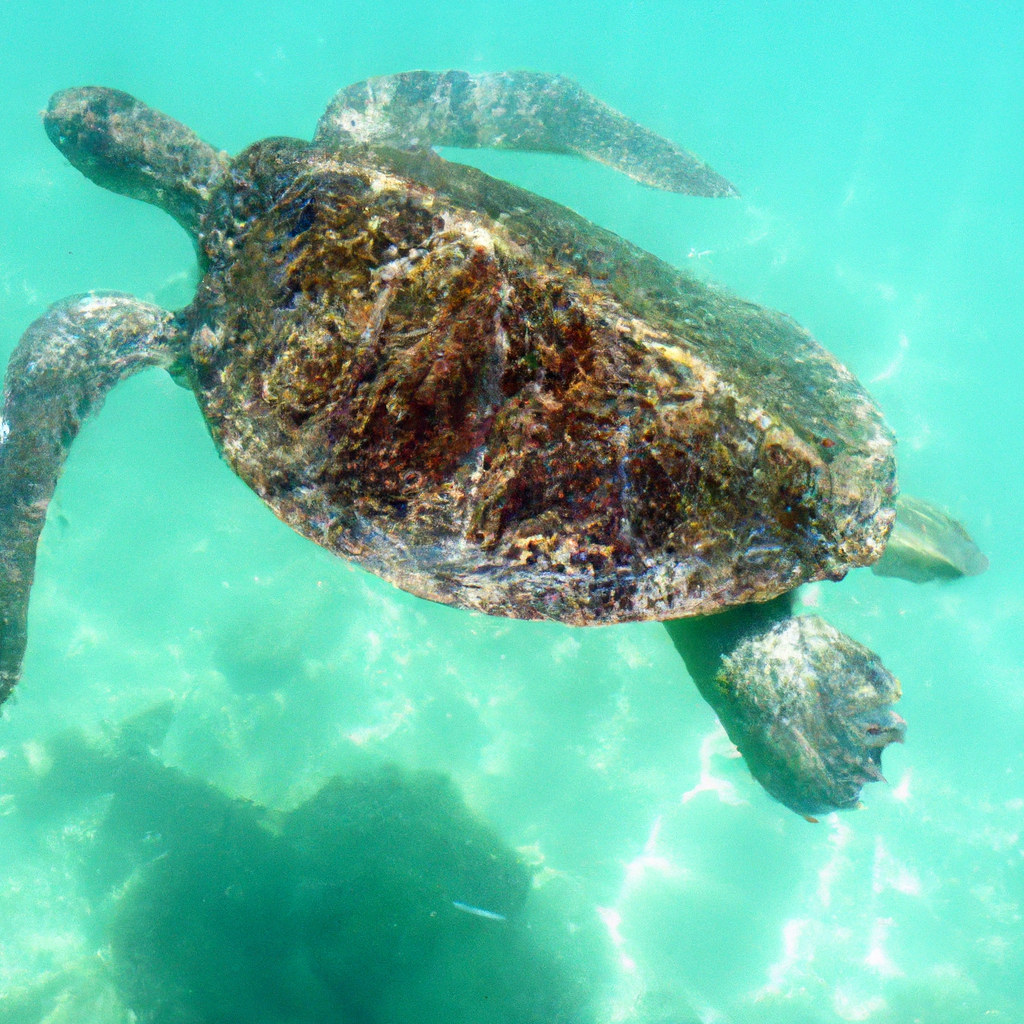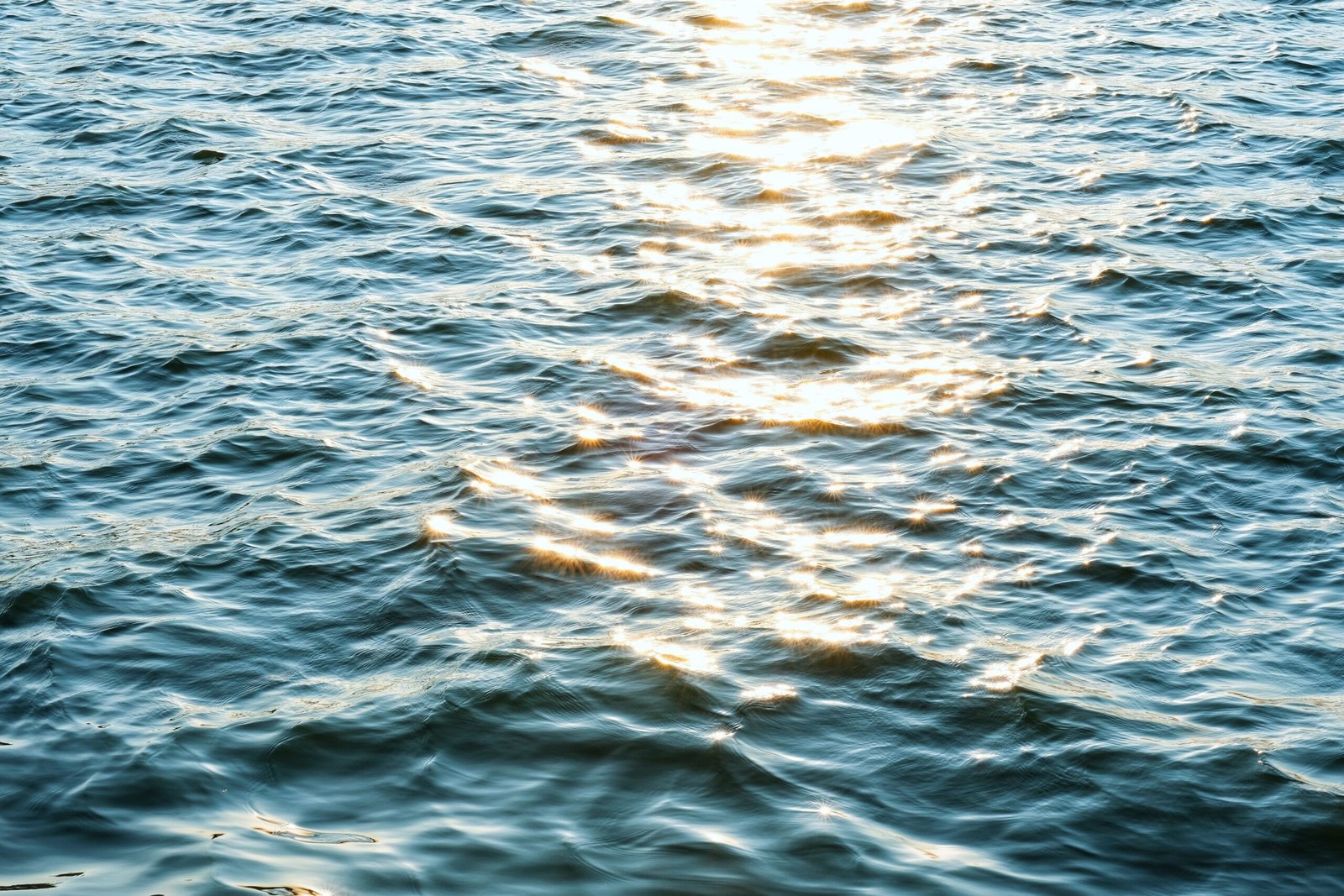Imagine yourself on a sunny beach, surrounded by the soothing sounds of the ocean waves and the gentle warmth of the sun on your skin. As you walk along the shoreline, you spot a creature emerging from the crystal clear waters – a majestic sea turtle. These incredible creatures, known as “Tortugas Marinas,” captivate our imaginations with their graceful movements and timeless beauty. In this article, we will explore the world of Tortugas Marinas, discovering their remarkable characteristics, their vital role in the ocean ecosystem, and the efforts being made to protect these magnificent creatures from harm.

The Life Cycle of Sea Turtles
Sea turtles go through several distinct stages in their life cycle, starting with the egg stage. This is when the female sea turtle lays her eggs on nesting beaches, carefully selecting a suitable spot to ensure the survival of her offspring. Once the eggs are laid, they are left to incubate in the warm sand for a specific period of time, typically around two months.
Upon hatching, the sea turtle enters the hatchling stage. These tiny turtles, usually no more than a few inches in length, make their way to the ocean, guided by the moonlight shimmering on the water. This is a critical and vulnerable stage for the young turtles, as they face numerous threats, both on land and in the water.
As they grow and develop, the young turtles enter the juvenile stage. During this time, they venture into oceanic habitats, away from the nesting beaches, to forage and find food. This is a period of exploration and learning, as they navigate through the vast ocean and adapt to various environmental conditions.
Finally, sea turtles reach adulthood, marking the last stage in their life cycle. Depending on the species, this transition can take anywhere from a few years to several decades. Adult sea turtles have fully developed shells, flippers, and all the necessary adaptations to survive in their unique marine environments.
Turtle Species
There are several fascinating species of sea turtles found around the world. One such species is the green turtle, known for its herbivorous diet and distinctive green-colored fat. Loggerhead turtles, on the other hand, have powerful jaws that enable them to crush their hard-shelled prey. The leatherback turtle is the largest of all sea turtles and has a unique toothless beak for catching jellyfish. Hawksbill turtles are renowned for their beautiful and unique shell patterns, often used for jewelry and other decorative items. Kemp’s ridley turtles are one of the smallest and most critically endangered turtle species, with nesting beaches primarily found along the Gulf of Mexico. Finally, olive ridley turtles, named for their olive-colored shells, have synchronized nesting events where masses of females come ashore to lay their eggs simultaneously.
Habitat and Distribution
Sea turtles can be found in a range of habitats and have varied distribution patterns. Nesting beaches are crucial for the survival of sea turtles, as this is where they lay their eggs and ensure the continuation of their species. These beaches need to be sandy, with the right temperature and humidity, to provide a suitable nest for the eggs.
Foraging and migration play an important role in the lives of sea turtles. After hatching, young turtles venture into the open ocean, where they feed on a variety of food sources, such as jellyfish, algae, seagrass, and even small fish. Some species undertake long-distance migrations to find food or reach specific nesting beaches, embarking on incredible journeys that can span thousands of miles.
Apart from nesting and foraging areas, sea turtles inhabit various oceanic habitats, including coral reefs, seagrass beds, and open ocean. These habitats serve as crucial ecosystems, providing food, shelter, and breeding grounds for sea turtles and a wide range of other marine organisms.
Nesting Behaviors
Nesting season is an important time for female sea turtles, as they return to their natal beaches to lay their eggs. The timing of nesting season varies depending on the species and geographical location, but it typically occurs during the warmer months of the year. Female turtles exhibit a strong homing instinct, often returning to the same beach where they hatched to lay their own eggs.
The nesting process begins when a female turtle emerges from the water and slowly makes her way up the beach. She carefully selects a suitable spot to dig her nest, using her rear flippers to dig a hole in the sand. Once the nest is formed, the female deposits a clutch of eggs, which can range from a few dozen to over a hundred, depending on the species.
Nesting site selection is a crucial aspect of sea turtle behavior. Females prefer well-sanded beaches with minimal vegetation and a suitable incline to ensure that the eggs are not flooded by high tides. They also seek beaches that are not overly disturbed by human activity, as this can disrupt the nesting process and harm the success of their offspring.

Threats and Conservation
Sea turtles face numerous threats that impact their populations worldwide. One significant threat is fishing and bycatch, where turtles become entangled in fishing gear or unintentionally caught during fishing operations. This can result in injuries or even death for these gentle creatures. Efforts are being made to promote sustainable fishing practices and reduce bycatch to mitigate this threat.
Habitat loss and degradation also pose a significant challenge for sea turtles. Coastal development, pollution, and the destruction of nesting beaches and foraging habitats all contribute to the decline of sea turtle populations. Conservation organizations and local communities are working together to protect and restore these vital habitats, ensuring the continued survival of sea turtles.
Climate change is another pressing issue that sea turtles face. Rising sea levels, increasing temperatures, and changes in ocean currents can have detrimental effects on sea turtle nesting sites and alter their food availability. These changes can disrupt the delicate balance of marine ecosystems and pose additional challenges for the survival of these remarkable creatures.
Poaching and illegal trade in sea turtle products, such as eggs, meat, shells, and leather, also contribute to the decline of sea turtle populations. Many countries have implemented laws and regulations to combat this illegal activity and protect these endangered species. Conservation efforts involve raising awareness, enforcing regulations, and working with local communities to provide alternative livelihoods.
Endangered Status
Due to the numerous threats they face, sea turtles are considered endangered species. International legislation, such as the Convention on International Trade in Endangered Species (CITES), provides protection for sea turtles and regulates their trade. It prohibits the international commercial trade of sea turtles and their products, encouraging countries to enforce strict measures to ensure their conservation.
Protected areas and sanctuaries have been established to safeguard critical habitats for sea turtles. These areas provide a safe haven for nesting and foraging, allowing the turtles to thrive and recover their populations. Conservation efforts also involve monitoring and research to better understand the biology, behavior, and migration patterns of sea turtles, enabling more effective conservation strategies.

Sea Turtle Anatomy
Sea turtles possess unique anatomical features that allow them to survive and thrive in their marine environment. Their most prominent feature is their shell, which acts as a protective armor. This shell is composed of two main parts: the carapace, which covers the back, and the plastron, which shields the belly. The shell is made up of bony plates called scutes, which grow with the turtle as it ages.
Sea turtles have adapted flippers, which are modified forelimbs, to help them navigate through the water. These flippers, with their streamlined shape, provide excellent propulsion and maneuverability, allowing sea turtles to swim gracefully and efficiently. Additionally, sea turtles have a well-developed head and jaw, equipped with strong beaks, which aid in capturing and consuming their food.
Their respiratory system is also essential for their survival. Sea turtles have the ability to hold their breath for extended periods of time, thanks to specialized adaptations. They can extract a significant amount of oxygen from each breath and slow their heart rate to conserve energy during long dives.
Sea turtles possess various senses to help them navigate their environment. They have well-developed vision, enabling them to see clearly both in and out of the water. Their sense of hearing allows them to perceive low-frequency sounds, which is crucial for communication and finding their way. They also have an acute sense of smell and can detect chemical cues given off by their prey, helping them locate food sources.
Diet and Feeding Habits
The diet and feeding habits of sea turtles vary among species, depending on their individual adaptations and the availability of food in their habitats. Some sea turtles, such as the green turtle, have herbivorous diets and primarily feed on seagrass and algae. Their specialized jaws and digestive systems allow them to efficiently process and extract nutrients from these plant-based foods.
Other sea turtle species, like the loggerhead and hawksbill turtles, have carnivorous diets and primarily feed on prey such as jellyfish, mollusks, and crustaceans. Their strong jaws enable them to crush and consume the hard shells of their prey.
Foraging techniques also differ among species. Some sea turtles actively search for food, swimming through their habitats and using their keen senses to locate and capture their prey. Others, like the loggerhead turtle, employ a different strategy known as “benthic feeding.” They forage along the ocean floor, digging into sediment and sifting through it to find their preferred prey.

Reproduction and Mating Behavior
Sea turtles have unique reproductive behaviors and mating habits. Courtship and mate selection occur in the water, where males actively pursue females. Males often engage in elaborate courtship displays, such as head movements and nuzzling, to attract females. Once a female has selected a suitable mate, she will mate multiple times during the nesting season, storing sperm to fertilize multiple clutches of eggs.
Mating typically occurs in offshore waters, away from nesting beaches. This behavior reduces the risk of inbreeding and provides a greater chance of successful reproduction for these ancient mariners.
The reproductive patterns of sea turtles vary among species. Some species, such as the green turtle, nest every few years, while others, like the loggerhead turtle, nest annually. The timing and location of nesting sites are precise, as females return to the same beaches where they hatched, ensuring the continuation of their species in the same areas where they have thrived for generations.
Longevity and Survival Rate
The lifespan of sea turtles varies depending on the species and individual circumstances. On average, sea turtles can live for several decades, with some species living well into their 80s or even beyond. However, their longevity is influenced by various factors, including environmental conditions, predation, and human impacts.
Survival challenges are numerous for sea turtles, particularly during their vulnerable stages. Only a small percentage of hatchlings survive to adulthood, with many falling prey to predators or encountering other threats along their journey from the nest to the ocean. Even as adults, sea turtles face risks, such as fishing gear entanglement, pollution, and habitat degradation, which can impact their survival and long-term viability.
Efforts to conserve sea turtles and protect their habitats are vital to ensure their continued existence for future generations to appreciate and admire these magnificent creatures. Through education, research, and collective action, we can make a positive impact and secure a brighter future for sea turtles worldwide.

